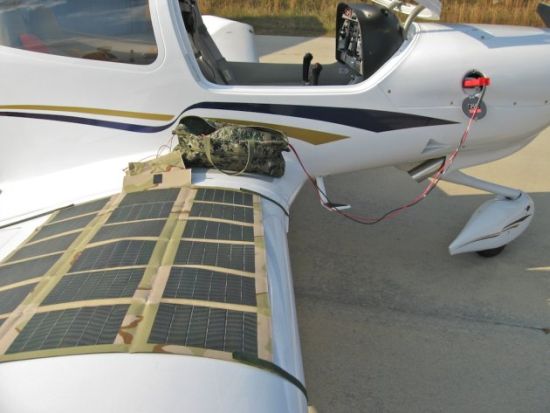
Taking to air and flying through the clouds has always fascinated the human intellect and still continues to do so even after a century of the first flight. It is amazing how we have come such a long way forward in aviation technology, yet one wonders if we need to now think of stuff that is away from the beaten path. The design and working of the carriers that take flight across the planet seem so rigid and it is almost as if we have resigned to following a set pattern. While modern aviation because of all its commercial reasons concentrates on developing speed and safety simultaneously, it seems we have lost flair fro individuality.
I still wonder when that machine is going to come which will finally allow me to fly and when I say ‘me’, I mean only me and none else. Flying is not just about traveling fast and safe but about a certain sense of freedom. I suppose such wings of freedom in future will only be created and powered by the energy of the sun. With the aviation industry getting plenty of stick for being a demon against the environment, it does not surprise one to see them moving forward in an eco-friendly fashion; even if the progress is a bit slow.
I have always wanted to know why airplane carriers do not have solar panels on their wings to power them like satellites. I do understand the limitations, but every bit of additional energy is welcome. Now a firm named Powerenz has decided to put Solar panels on wings of small personal aircrafts so as to allow pre-flight testing without actually switching the engine on with aviation fuel. This not only means less pollution and conserving the fuel that is very expensive, but it also ensures plenty of safety and flexibility in pre-flight testing.
The step-up of DC-DC converter and a 12 volt battery powered by energy supplied by the solar panels helps the process work. The unit can be used for approximately 90 minutes before the portable battery required recharging. Ninety minutes of power is more than sufficient time to plan a flight, check weather, etc. During these preflight checks the aircraft engine does not have to be running, nor does the aircraft battery have to be used. This saves on both on costs and on pollution. To recharge the portable battery when low on charge would require 3-4 hours of good sunlight when using two 42-watt solar panels. The solar panels can be draped and secured over the aircraft wing, and left in place while the aircraft is parked on land until the next flight. When not in use, the portable system can be stored inside the aircraft until it is needed again. The system is indeed a nice step forward in building an aviation industry that is eco-friendly and green.
Source: SolarPowerRocks




